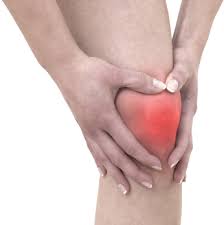Pharmacotherapy produced divergent opinions. Some really hated the class, but other really enjoyed it. I was on the positive side and appreciated the curveballs thrown by the professor. Each semester for the remainder of the classroom portion of the PharmD program will have a therapy component. This course takes a common disorder and focuses on the way we treat it. It can't get anymore straight forward. This is the purpose of any health career, so pharmacotherapy is perhaps the most prescient class of our program (up there with PCL).
The second semester of the PY1 focuses on the #1 reason a patient encounters a health care provider - PAIN. Pain lets us know that something is wrong with our body and sends the patient to see the doctor. Everyone takes some kind of pain medicine, whether Advil and Tylenol up to Percocet and Morphine. Our task this past spring was to understand pain management.
We started by learning about medical records. Some people didn't seem to understand why. While, we do not perform the physical examination or run the clinical labs, we do have to understand what is in the file. Is the patient's potassium too high or too low? Does the positive stool guaiac have any relevance to the patient's abdominal pain? We have to be able to distinguish the pertinent positives of a medical history from pertinent negatives. This was perhaps the most confusing part to the majority of the class. I hope that my understanding can work for you. A
pertinent positive refers to any abnormality in a patient's chart. If a value is outside the normal range, it is important to note. A
pertinent negative refers to something that we would expect to be wrong, but is okay. So if you hypothesize that the patient has internal bleeding, but a high hematocrit that would be a pertinent negative as bleeding should decrease your blood count. Reading an understanding a chart helps the doctor diagnose a disorder, but it helps the pharmacist manage the appropriate therapy and prevent potential errors.

Finally, we moved onto the topic of pain. We talked about metastatic pain from cancer and the various forms of joint pain from arthritis. Choosing the appropriate pain medicine depends on severity and side effects. Opioids are the best at reducing pain, but also suppress breathing. Surgical patients blow hard into a spirometer every hour to clear their lungs of potential bacteria as the morphine keeps them from doing so on their own. Patients with severe pain take a standing dose of an opioid but also need a rescue dose for breakthrough pain. The pharmacist must check the doses, convert between one opioid to the next and watch for side effects.

In the case of arthritis, pain medicines must also be used with other therapies. Also start with the lowest possible solution - Tylenol and exercise. Maybe braces could be required to stabilize the joints, but if the problem progresses, move up to NSAIDs like Advil. Unfortunately, NSAIDs cause a lot of problems like gastrointestinal bleeding, kidney problems, and clotting issues. Millions of people take NSAIDs everyday without recognizing the possible consequences. Most people take them for acute reasons like a sprain or headache, but chronic use can be a problem like with arthritis. Whether osteoarthritis, rheumatoid arthritis or gout, the disorder will affect them for the rest of their lives. Now you need treatments like allopurinol to lower the uric acid in the patient's blood to prevent gout flares. Or methotrexate or Remicade to fight the debilitation of rheumatoid arthritis. Pain can be quite complicated and the medications can cause their own problems.
No comments:
Post a Comment